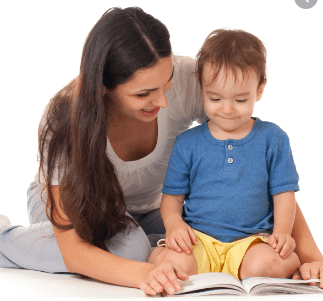You have heard it a thousand times before: Reading is one of the most important things you can do for your child!
Reading provides children with rich language, but it’s more than reading the words on the page. It allows for things like vocabulary practice, predictions, exposure to written words, perspective taking, emotion words, and much more! I will walk you through some easy ways to engage your child and provide them with even more language!
Start with the cover
Ask your child to look at the cover of the book and point out the pictures on the cover. Use the vocabulary that your child knows. Ask “what do you think this book is about?” They may not know just based on the picture, but it is a great way to get them engaged from the start. That way, when you are finished reading, you can compare what they predicted and what actually happens in the end!

Talk about the feelings!
Maybe there’s a picture of a character who looks sad, angry, or excited. Build your child’s emotional vocabulary to include more complex emotions such as frustrated, surprised, irritated, etc. Ask your child “How do you think they feel? How do you know that?”. This can paint a picture of how facial expression helps you understand how a person feels. Have your child imitate that emotion! Your child can make predictions about the character’s emotions and why they feel that way. Talk about how they feel and tie it back to the events that happen in the story.

Really look at the pictures!
This is wonderful vocabulary practice. Point to different objects in the pictures and see if your child can name them. This could just be vocabulary practice, or it may be exposure to a new word. For your child who isn’t reading just yet, you can have them “read” you the story by looking at just the pictures. Talk about the things in the pictures and the sounds they make such as a cow that says “moooo”. Let them come up with the language for the story based on illustration alone. Not only is it a great language activity, but you will hear some of the most elaborate and adorable made-up stories!

Finally, act it out!
Read the story with your child, and then have them act it out. You can make it as simple or as elaborate as you want (props!). This is a fun way to keep them engaged while reading. You can also have them act it out after you have read the story. This is a simple way to practice retelling the major events of the story!
Reading a book can be a very simple activity, but you may be looking for ways to make it more engaging.
These are easy, but fun strategies to switch up reading, while providing more opportunities for meaningful language. You can do this!
Make reading fun, it more than just the words on a page!



